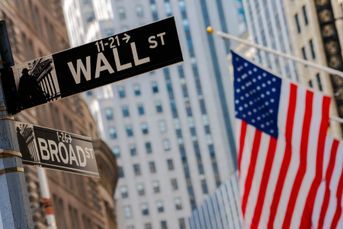Bond yield volatility requires new trading strategies

The market is riskier, but that can mean opportunity.
Old-school bond investors are showing that it’s not just the fast-money crowd who can thrive in this volatile new era.
Long a staid, reliable place where money managers parked retirement savings, government bonds are now among the most unpredictable in the investment world. Hedge funds have been quick to embrace the volatility — and profits — and now traditional fixed-income players are starting to do the same.
“As an investor we have to deal with calming our clients down, but volatility can be our friend,” said Gershon Distenfeld, who manages around $47 billion as director of income strategies at AllianceBernstein.
Bond volatility has consistently overshot other assets for the past two years while long-term yields swing more violently than the daily average of the past decade. That means that buy-and-hold investors have had to morph into traders — or risk being left behind in the melee of a fast-paced market.
For a glimpse into the tricky calculus behind bond market calls, just take this week: producer prices rose by more than projected but consumer price inflation cooled. That left bets on a Federal Reserve rate cut this year in play, and also kept bond volatility alive.
“It’s more of a trader’s market now,” said Tim Magnusson, chief investment officer at Garda Capital Partners, a hedge fund. “It’s all been a bit of a transition that fixed income folks have had to endure and get used to.”
Magnusson says the risk of holding directional bets overnight or over the weekend is higher, with data surprises packing a bigger punch. Distenfeld at AllianceBernstein adjusts his duration, a measure of interest-rate sensitivity, more often than the firm typically has over the past 15 years.
Three-month implied volatility on the $47 billion iShares 20+ Year Treasury Bond ETF (TLT) has averaged about 2.5 percentage points in the past year, above that of the $520 billion SPDR S&P 500 ETF (SPY) and a reversal of historical trends. Since April, rates on 30-year Treasuries have swung by around eight basis points per day, well above the daily range seen over the last decade.
‘MUCH MORE ACTIVE’
As yields and prices whipsaw, investors just holding an index of US Treasuries lost about 2% this year. By contrast, fast-money quant funds with a large share of trades in fixed income are up 5.28% this year, according to a Barclays index.
That helps explain why asset managers are doing much less holding — and much more buying and selling. Active money managers are touting this ability to trade and time the market as they try to win back hundreds of billions of dollars lost to passive index funds.
JPMorgan Chase & Co. research found that bond mutual funds were turning over US Treasuries at a ratio 49% higher at the end of April compared with two years earlier. A similar trend can be seen for German bunds and Japanese government bonds.
“We have to be much more active in management, quicker to add, cut or modify positioning on the curve,” said Vincent Mortier, chief investment officer at Amundi SA.
The pumped-up volumes can also be seen on Wall Street, where bond dealers handling the frenetic pace of trading are expecting fatter bonuses.
As with most things in the bond market, the volatility starts and ends with central bankers. Their retreat since 2022 as the bond market’s biggest buyers has ushered in price-sensitive investors who demand bigger payouts to sweep up a glut of supply.
“Volatility is also an opportunity,” said John Madziyire, a portfolio manager at Vanguard, which manages $9.3 trillion. “If you are a long-term investor it gives you better entry levels to get in.”
Swings in yields are running 50% above pre-2022 levels, according to AlphaSimplex Group’s measure of intraday sovereign rate volatility captured through futures trading. While those swings are welcome by hedge funds like AlphaSimplex, they’re a problem for the swaths of traditional firms that rely on a mix 60% stocks and 40% bonds.
“If you are taking a long term view, as many investors do, then you have a lot more risk than many expect with bonds,” said Kathryn Kaminski, the firm’s chief research strategist.
Rather than experiment with fixed-income volatility, some money managers are looking elsewhere for the hedging power they used to get from bonds. JPMorgan Asset Management is replacing bonds with less-liquid but less-volatile private assets. State Street Global Advisors and Aviva Investors are turning to gold.
The return of easier central bank policy may calm volatility, but probably not back to where it was before the onset of higher rates. Financial markets have already moved to price in more tumult, as high-for-longer Fed funds rates, swelling US fiscal deficits and rising geopolitical tensions around the globe all keep volatility elevated.
“Bonds aren’t quite the safe anchor they used to be and the rise in volatility has portfolio implications,” said David Kelly, chief global strategist at J.P. Morgan Asset Management. “This isn’t your father’s bond market and you have to adjust appropriately.”
Learn more about reprints and licensing for this article.








